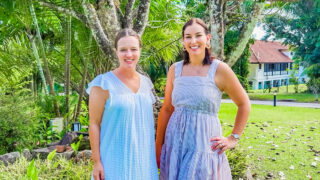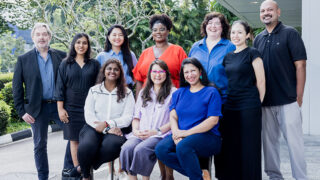No doubt you’ve been out exploring Singapore more than usual lately, including on foot. If so, you may have noticed more plants than you do when zipping by in a car. But what are they exactly? There are so many different types of flowers, trees and other plants in Singapore – some are native, but heaps have been imported over the years. Here’s a handful to satisfy your curiosity, plus some interesting stats!
Jungle Flame
These beautiful plants are found all over Singapore. They’re also prevalent in Myanmar, where a romantic marriage custom involves building a floating garden and planting jungle flame on it. On the wedding day, the bride sits on the garden in her finery; the ropes holding the garden in place are cut and she floats down the river to meet her groom.
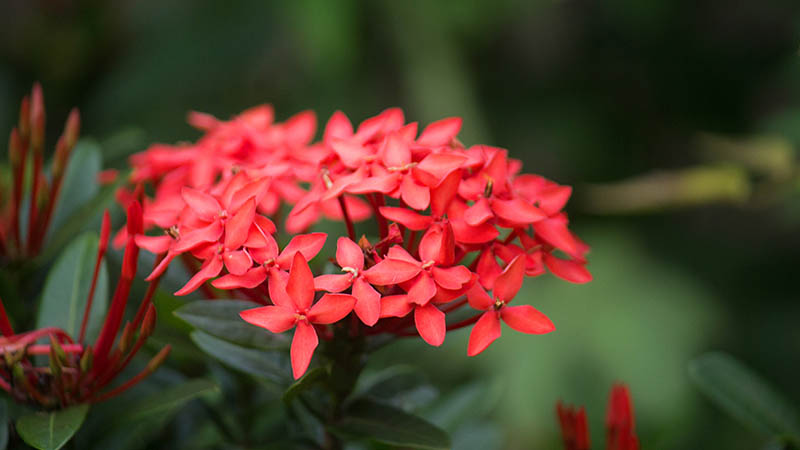
Pong Pong
Many Singapore plants have elongated leaf tips called “drip tips”; they’re designed so rainwater can run off quickly without creating mould or bacteria. A common drip-tip plant here is the pong pong, also called the suicide plant – it bears a fruit known as othalanga whose potent poison has been used in suicides and even murder.
Bougainvillea
These stunners are all over Singapore in a variety of colours, yet the colourful part isn’t the flower at all – it’s a special kind of leaf called a bract. The true flowers are tiny and white. Bougainvillea sap is mildly toxic; if ingested in large enough quantities, it can make you quite sick. The leaves aren’t toxic, but stay away from the sharp thorns as a prick can lead to a skin rash.
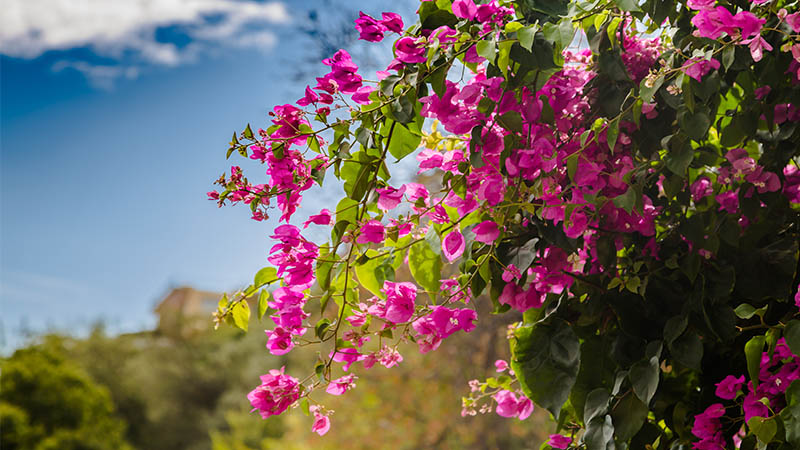
Sugar Palm
Big bunches of these trees, which grow up to 20 metres tall, look like strands of green pearls. An important sugar source over the centuries, they are harvested year-round and can produce 20 to 30 litres a day. Sugar palms only grow in diverse forest environments, so they can’t be planted in rows like palm oil. They’re a great source of food for animals, with three times more energy than sugar cane. Palm sugar is usually produced in an eco-friendly way, and is healthier for humans than white sugar.
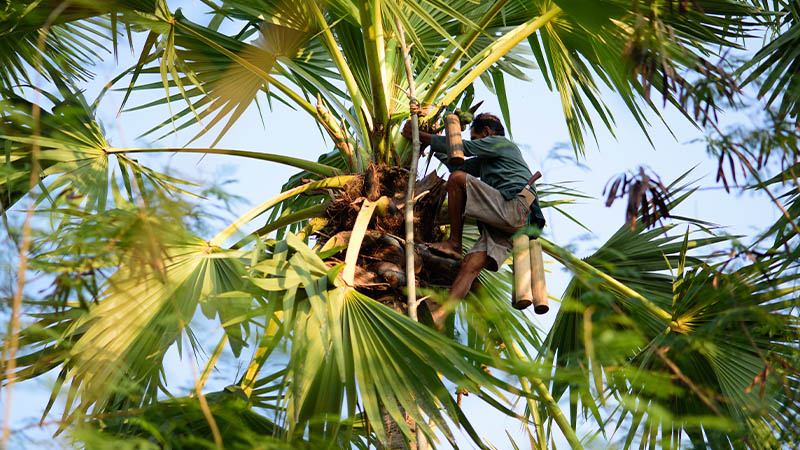
Sun Dew
This plant eats bugs! When it feels an insect on its sticky, specialised leaves, it moves its tentacles towards the centre of the leaf. These tentacles contain digestive enzymes that slowly digest prey, leaving only the exoskeleton. Once the tentacles have flung inwards, they can’t be unwound or used again. No worries: the plant makes many new leaves every few days.
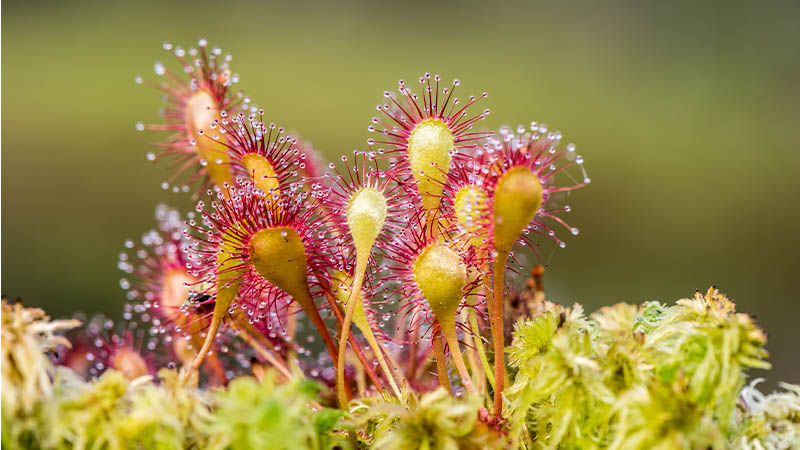
Butterfly Pea
Ever tried one of those magical colour-changing cocktails? The secret ingredient is the butterfly pea, whose dried flowers produce a blue solution that turns purple when lemon juice is added! The same blue pigment is used in Peranakan desserts such as kueh salat. People swear by the plant’s medicinal benefits, too, from improving eyesight to enhancing the immune system and strengthening hair. But before you go on the hunt for some flowers yourself, remember it’s illegal to pluck roadside plants in Singapore!
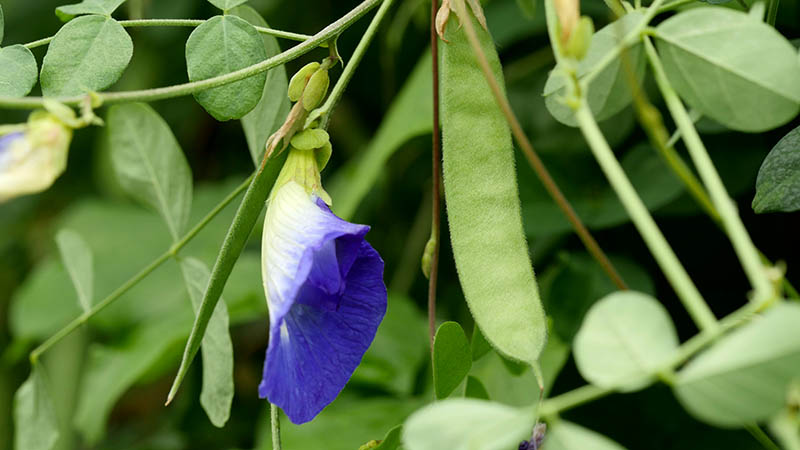
Traveller’s Palm
These giant fans sticking up in the air aren’t true palms; rather, they produce big, erect flowers like heliconias. But they seldom bloom in Singapore due to the wet weather. The fans supposedly always lie in an east-west orientation, serving as a crude compass for travellers (though it’s not necessarily true). This tree collects a lot of rainwater – each hollow leaf base can hold about a litre, making it a favourite for mosquitos. Singapore is aggressively pruning them to fight dengue.
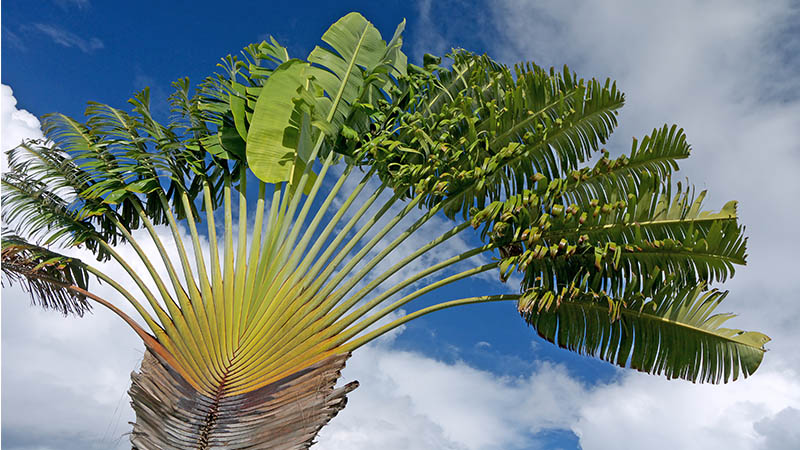
Red Lip Tree
You know how it is: you walk by an enormous house and strain to get a look at it, but you can’t because of the hedge. The trouble-making plant just might be red lip tree, as it’s often used as decorative fencing. The red leaves are edible, by the way, with a spicy, peppery and slightly botanical flavour. Be careful, though; there’s another plant with red leaves called the blindness tree; it’s highly toxic and shouldn’t even be handled without gloves!
Lipstick Plant
Not be confused with the above, this plant native to Singapore has flowers that look like giant red lipsticks peeking out of dark tubes. You can buy them at the nurseries to grow indoors, but in the wild, the lipstick plant grows as an epiphyte, climbing on tree branches and soaking up water from Singapore’s humid air.
Wormwood (aka Mugwort)
If you’ve walked in Fort Canning, you’ll have seen a lot of wormwood. Also known as Asian dill, this herb has a dill-like flavour and slightly bitter aroma. It’s been used in traditional medicine for hundreds of years, and also to flavour absinthe (the drink’s name comes from the scientific name for wormwood). For a long time, it was blamed for the problems caused by the drink, so much so that wormwood – long considered a hallucinogen and potential poison – was banned in America from 1912 to 2007. Today, it’s legal again.
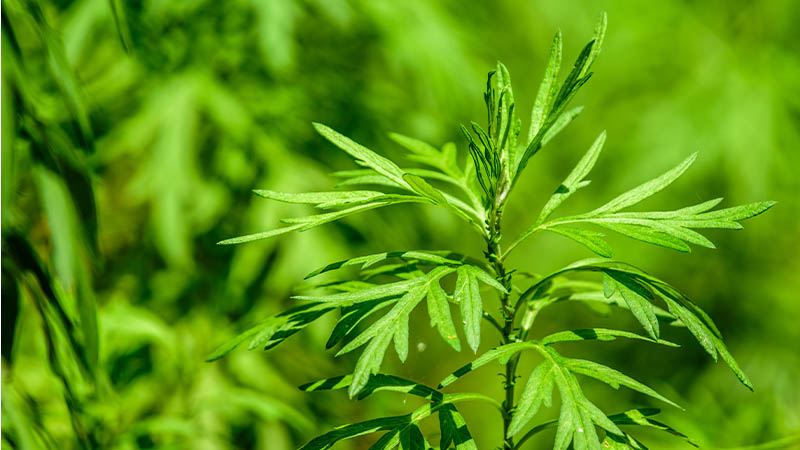
The Handkerchief Tree
This tree is named for new leaves at the end of branches that are almost white in colour and resemble soft handkerchiefs. They hide small reddish-purple flowers inside. These harden over a few days and turn green, joining the others on the branch. Birds love these trees, which have big, brown, round fruit pods. The timber is quite strong, too, and can be used for making furniture.
Tip: Want to know what the plant is you’re looking at? Try the free app, Picture This. Simply take a photo and it will immediately give you loads of details and even save your photo.
Singapore’s plants in numbers
• 4712 flora species
• 88 tree families
• 1,689 tree species
• 259 heritage trees
Source: NParks
NParks has a website that identifies every plant in Singapore: nparks.gov.sg/florafaunaweb. Also, see the cool interactive map at trees.sg.
This article first appeared in the June 2020 edition of Expat Living. You can purchase a copy or subscribe so you never miss an issue!




